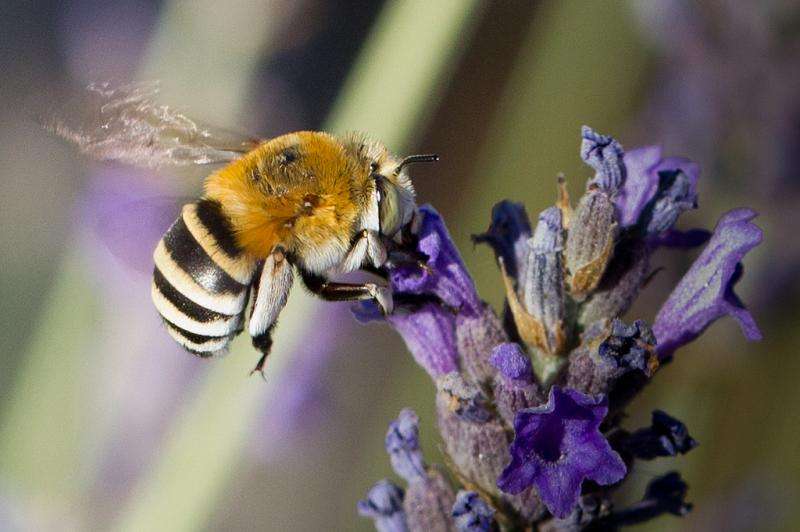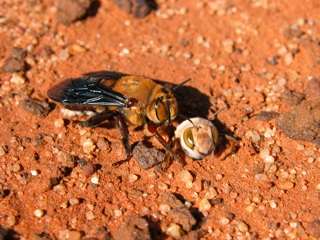Single lady bees load up on perfume

Few species have a more harrowing mating experience than WA's gladiatorial, ground-burrowing Dawson's bee (Amegilla dawsoni).
Females emerging from their burrows are met by a frenzy of males, who battle to the death to copulate, often accidentally killing the target of their affection in the process.
Female bees who manage to escape these lust-driven killing fields would appear to be lucky, though University of Western Australia Professor Leigh Simmons says they face a new challenge: the prospect of being left unmated.
To avoid this fate, they do the unthinkable: increasing their sexual signalling by upping the intensity of their 'perfume'—long-chain fatty acids known as cuticular hydro-carbons (CHCs) which they secrete onto their bodies.
"Males search for emerging females visually, looking for disturbances in the ground, and then differentiate emerging males and females by tasting their CHC profile," Prof Simmons says.
"While male mate-searching is highly efficient, with 80 to 90 per cent of females mating on emergence, some females escape to nearby feeding grounds.
"We found that as time goes by and the risk of being left unmated rises, they increase the intensity of their CHCs to heighten desirability."
While adding hormonal fuel to the raging male A. dawsoni libido seems suicidal, it isn't, as males frequenting feeding areas are roughly half the size of their sexually fervent competitors.

"Dawson's bees are interesting in that their evolution maintains a minor male morphology with low reproductive opportunities," Prof Simmons says.
"These minor males have no chance of competing with the larger males for emerging females, but they do get mating opportunities with those who escape.
"Our hypothesis is that minor males are important as workers in female cells, helping to dig the tunnels to the surface so the majors get a clear run.
"It may be a survival mechanism, as mortality in the tunnels is quite high."
Prof Simmons and his team confirmed their findings by collecting forty female bees from an emergence site five kilometres away from Carnarvon.
Their analysis found that mated and unmated females had distinctly different CHC compositions and that females prevented from mating for 24 hours had elevated CHC levels.
They discounted the possibility that changes in CHC profiles were age-related, as nesting females took longer than 24 hours to become unattractive to potential mates.
Once the females mated their profiles were modified to become undesirable to males.
Provided by Science Network WA




















